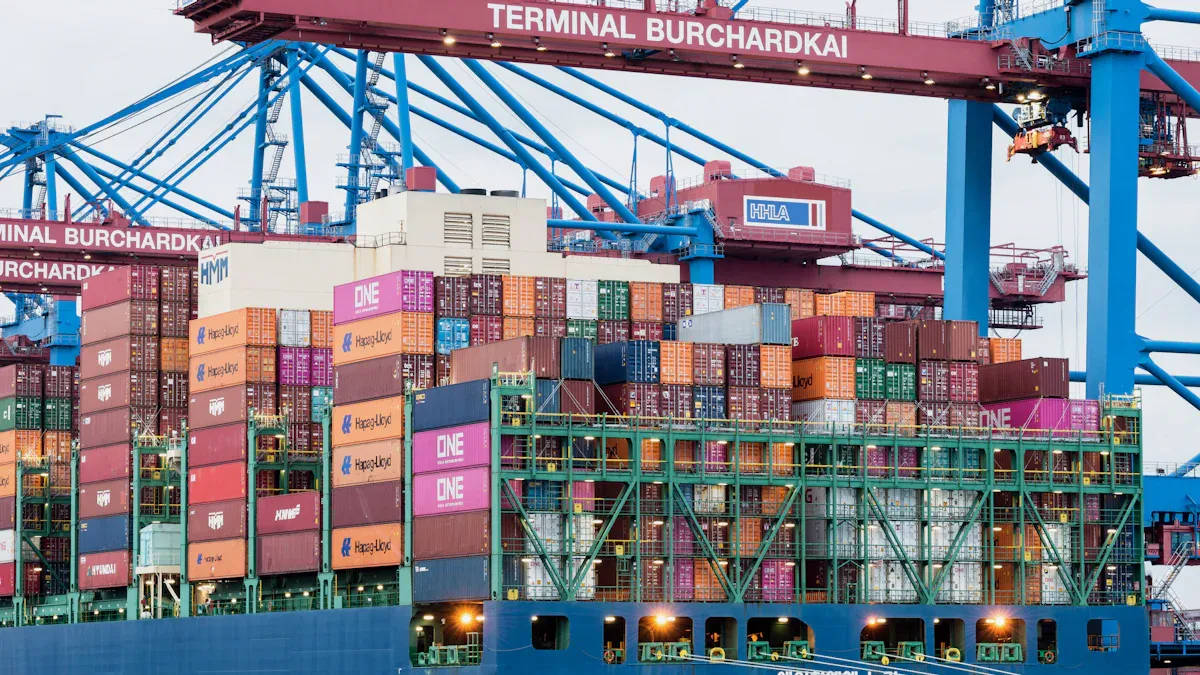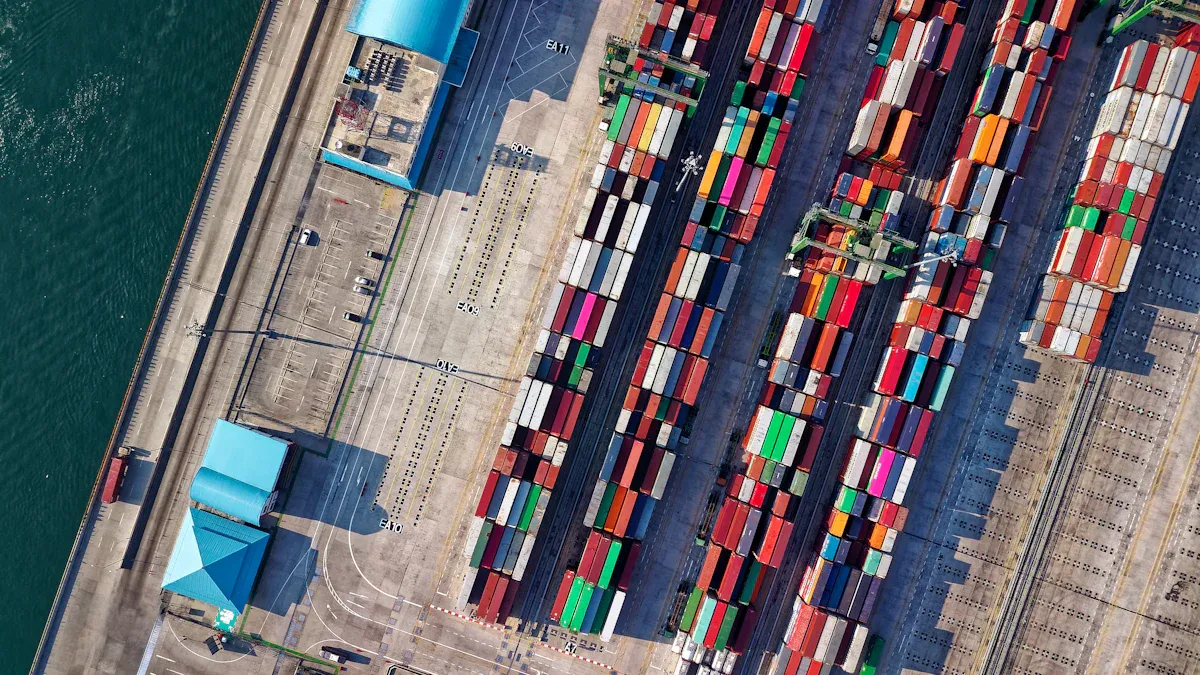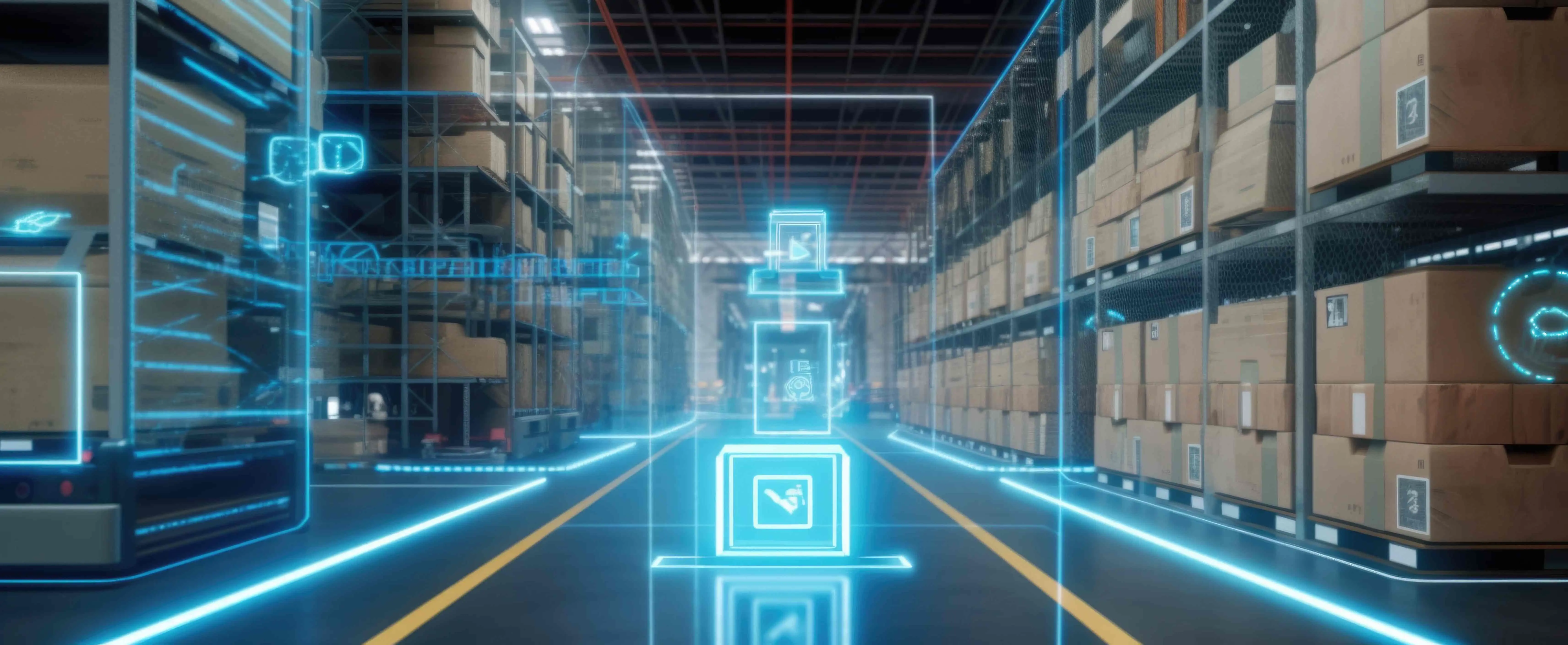How to Build an Effective Overseas Warehousing and Distribution Network

You can make a good overseas warehousing and distribution network by planning well, using technology, and working with good partners. The global warehousing and distribution logistics market is growing quickly. This is because of e-commerce and new trends in international logistics. Companies like JUSDA show how a global network helps overseas logistics and international logistics work better.
Key Takeaways
Make a good plan and pick warehouse spots near customers and suppliers. This helps save money and makes orders arrive faster.
Use new technology like real-time tracking and automation. This helps you keep track of inventory and fill orders quickly.
Team up with skilled partners who give flexible and low-cost services. They also help you follow local rules and keep your supply chain working well.
Overseas Warehousing Essentials

What Is an Overseas Warehouse
An overseas warehouse is a place in another country where you keep your products. This helps you store goods closer to your customers. There are different kinds of overseas warehouses. Some are bonded warehouses, some are distribution centers, and some are fulfillment centers. Each one helps with different things like shipping, storage, or order processing. Cross-border warehousing lets you keep inventory in more than one country. This makes it easier to handle international logistics and fulfillment. Picking the right overseas warehouse can help you ship faster and save money.
Key Benefits
Overseas warehouses give your business many good things.
You can save money on shipping by sending lots of products at once and keeping them near your customers.
Your customers get their orders faster, which makes them happy and helps you do better in ecommerce.
Real-time tracking systems, like JUSDA’s JusLink and eVMI, help you stop overstocking and avoid delays.
You can handle customs and rules better, so you get fewer fines and delays.
It is easier and cheaper to handle returns when you use local fulfillment centers.
Companies like Sharp have saved 20% on logistics costs and made deliveries 30% faster by using overseas warehousing.
Common Challenges
Challenge Category | Description and Impact | Mitigation Approach |
|---|---|---|
Supply Chain Issues | Warehouses may be full, deliveries can be late, and demand can change fast. | Work with 3PL providers who can help when things go wrong. |
Visibility and Tracking | It can be hard to see where your goods are, which can cause lost items or late deliveries. | Use new technology and connect your data for real-time tracking. |
Logistics Cost Management | Tariffs, exchange rates, and hidden fees can make costs go up and down. | Hire 3PLs with big networks to help lower costs. |
Cultural and Language Barriers | Talking to people in other countries can be hard and slow things down. | Work with 3PLs who know many cultures and languages. |
Inventory Management and Warehousing | It can be tricky to store goods, plan for lead times, and guess how much you need so you don’t run out. | Use warehouses in good spots and strong inventory management tools. |
Transportation and Delivery | Fuel costs, keeping equipment working, planning routes, and making deliveries can be tough. | Use global transport networks and trusted partners for logistics. |
Scalability | Sometimes you need more workers or space during busy times. | Pick 3PL providers who can grow or shrink with your business. |
You might have these problems when you start cross-border warehousing and fulfillment. Good planning and the right technology can help you fix these issues. Choosing the best type of overseas warehouse for your business makes your logistics network better.
Building Your Overseas Warehousing Network
Planning and Location
You should always start with a good plan. Picking the right place for your overseas warehouse is very important. If your warehouse is close to customers and suppliers, you can save money on shipping. You will also deliver orders faster. Look for places with good roads, ports, and airports. This helps your goods move without delays.
Here is a table that shows what matters most when choosing a location:
Key Factor | Impact on Operational Efficiency |
|---|---|
Customer & Supplier Proximity | Makes shipping faster and cheaper. Helps your business run smoothly. |
Transportation Infrastructure | Makes sure shipments arrive on time. Helps with fast delivery and fewer delays. |
Real Estate Costs | Affects how much you spend on rent and taxes. Impacts your budget and if you can stay long-term. |
Workforce Availability | Makes it easier to find workers. Helps you work faster when you are busy. |
Space and Scalability | Lets your business grow without moving. Keeps your warehouse running well for a long time. |
Technology & Operations | Makes your inventory and orders more accurate. Helps your business systems work together. |
Market Reach | Lets you deliver to more places quickly. Gives you an edge over others. |
Safety & Security | Keeps your goods safe from loss or damage. Stops problems before they happen. |
Tip: Try using Geographic Information Systems (GIS). These tools help you see where demand, transport, and workers are. This makes it easier to pick the best spot for your overseas warehouse.
Make sure your warehouse location matches your business goals. For example, JUSDA has warehouses in Vietnam, the US, China, and Europe. This helps them manage inventory and reach new markets quickly. Good planning helps your overseas warehousing work well for many years.
Partner Selection
Picking the right partners is very important for international logistics and fulfillment. You want partners who know your industry and have done this before. They should use new technology like real-time tracking and warehouse management systems. This keeps your supply chain working well.
Here is a table with things to look for in a partner:
Criteria | Explanation |
|---|---|
Flexibility, Technology, Adaptability | Can change to fit your needs and connect with your systems. |
Industry Experience and Warehouse Network | Knows your business and has warehouses in good places. |
Cost-Effective Shipping and Network Optimization | Offers good prices and many ways to ship. |
Safety and Security | Keeps your goods safe with strong rules. |
Customer Service Excellence and Value-Added Services | Gives great help and extra services like returns. |
Scalability and Customization | Can grow with your business and meet special needs. |
Inventory Management Accuracy and Disruption Response | Keeps records right and fixes problems fast. |
Note: Ask other businesses for advice. Talk to possible partners to see if they are a good fit.
JUSDA is a third-party logistics provider with a big network and new technology. Their overseas warehousing system uses JusLink and eVMI for real-time inventory tracking. This helps you avoid mistakes and keep your orders moving. Sharp worked with JUSDA and saved 20% on logistics costs. They also made deliveries 30% faster.
Compliance and Regulations
You must follow all local and international rules when you run overseas warehouses. Every country has its own customs, tax, and labor laws. If you do not follow these rules, you could get fines or have delays.
Here are some things to remember:
Bonded warehouses let you store goods before paying customs duties. This helps you save money.
Learn about local tax and job rules. Local experts can help you avoid mistakes.
Protect your ideas by registering patents and trademarks in each country.
Make a strong compliance program. Train your team and keep good records.
Work with customs brokers and experts to handle tricky international logistics.
Big companies use digital tools to track compliance. For example, JUSDA’s overseas warehousing systems connect with customs and trade databases. This makes it easier to manage papers and avoid mistakes. Regular checks and training help your team keep up with new rules.
Technology in Overseas Warehousing Systems
Modern overseas warehousing systems use technology to work better and faster. Warehouse Management Systems (WMS) give you real-time data on inventory and orders. Automation, like robots and AI, helps with picking, packing, and shipping. This cuts down on mistakes and speeds up orders.
Here are some ways technology helps your overseas warehouse:
WMS lets you see your inventory at all times.
Automation does simple jobs, so you need fewer workers and make fewer mistakes.
AI helps you guess what you will need, so you do not run out.
IoT and cloud computing let you check your warehouse from anywhere.
RFID tags and sensors help you find products fast and stop losses.
JUSDA’s overseas warehousing system uses JusLink and eVMI for smart inventory control. Their warehouses use robots and AI to pick items more accurately and quickly. This helps you fill orders faster and serve customers better. Sharp worked with JUSDA and cut labor costs by 70%. They also sped up deliveries.
Cost Optimization
You can save money in overseas warehousing by using smart ideas and technology. Automation and WMS lower labor and storage costs. Good inventory management stops you from having too much or too little stock. Outsourcing some jobs to third-party providers lets you focus on your main business.
Here are some tips to save money:
Make deals with vendors for better prices and payment plans.
Use demand forecasting to keep the right amount of stock.
Use automation and ERP systems to make work faster.
Put warehouses in places that save money and reach more customers.
Let experts handle returns or special packaging.
Big companies like Amazon and Alibaba use robots to save money and work faster. JUSDA’s global network and advanced overseas warehousing systems help you cut costs by shipping shorter distances. Their technology lets you handle more orders with less work.
Customer Satisfaction
Overseas warehousing helps make customers happy. When you keep goods close to customers, you can deliver faster and charge less for shipping. New technology makes sure orders are right and sent quickly.
Ways to make customers happier:
Set up your warehouse for fast picking and packing.
Use order software to stop mistakes.
Put warehouses near important markets for quick shipping.
Work with good logistics partners for on-time delivery.
Use real-time tracking so customers know where their orders are.
JUSDA’s overseas warehousing system helps you meet customer needs with real-time inventory tracking and fast fulfillment. Their work with Sharp led to faster and more accurate orders, making customers happier. When you use good ideas and the right technology, you build trust and loyalty in your international logistics network.

JUSDA Solutions
To provide you with professional solutions and quotations.
You can make a strong overseas warehousing network by picking good partners. Use new technology to help your business. Always look for ways to do things better. JUSDA’s global skills and digital tools help you with international logistics. They help you spend less money and deliver orders faster. Keep checking how you are doing. Change your plans when you need to so you can stay ahead in global markets.
See Also
Overcoming Global Supply Chain Growth Obstacles Effectively
How Robotics Technology Transforms Warehouse Efficiency Today
Artificial Intelligence Driving The Future Of Supply Chains
Introducing JUSDA’s Latest Warehousing Solutions For Greater Efficiency
Exploring How Robotic Automation Improves Warehouse Operations
